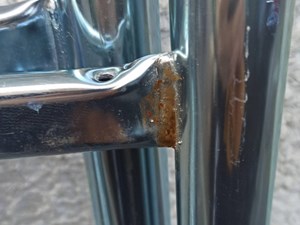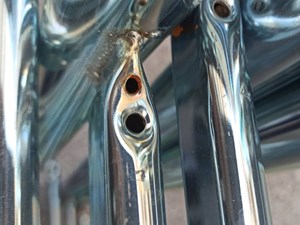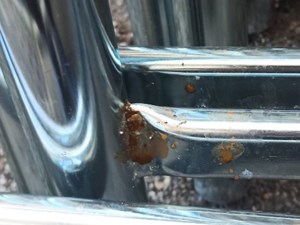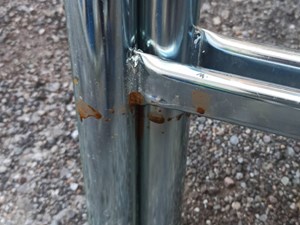ELECTROLYTIC GALVANIZATION ON STEEL SCAFFOLDING
What is electrolytic galvanizing, how it works and how it protects steel scaffolding
Galvanizing is the process by which a zinc coating is applied to a metal product (steel in the case of scaffolding) to protect it from galvanic corrosion.
Zinc is less noble than steel and becomes the sacrificial anode in electrolytic corrosion and is consumed avoiding rust on the treated surface.
Obviously, after a long time and if left to the elements, the galvanized product will gradually tend to consume the zinc layer and take on rust.
GALVANIZING SYSTEMS
- electrolytic zinc plating; used for scaffolding
- hot dip galvanizing; used for scaffolding and other products but not for scaffolding. The immersion of steel products in a bath of molten zinc determines the covering of the steel with a resistant layer of zinc with a thickness much higher than that of electrolytic zinc plating
- hot-dip galvanizing;
- cold galvanizing;
- spray galvanizing.
ELECTROLYTIC GALVANIZATION FOR SCAFFOLDING
The material to be treated (shoulders and sills of the scaffolding) is suitably prepared (pre-degreased, pickled and degreased).
Immediately after (and hence the process differs greatly from the others) the material is immersed in an electrolytic solution containing zinc salts.
Finally, a current passage is created between the piece (hanging from a hook that passes the current to it) and the electrolytic solution.
This current attracts and causes the metallic zinc to deposit on the external surface of the scaffolding component.
We specify EXTERNAL as the electrolytic galvanizing DOES NOT PENETRATE INSIDE THE PIPE.
Being an electrolytic system, the molecules will take the shortest route, it goes without saying that it is practically impossible that they will go inside the tubes
Being an electrolytic system, the molecules will take the shortest route, it goes without saying that it is practically impossible that they will go inside the tubes
DO SOME RUST STAINS INDICATE A GALVANIZING DEFECT?
No. Despite being galvanized, the scaffolding should not be left outside.
They can certainly be used outdoors, to be then stored in a dry place.
If they are used for eternity in the rain or abandoned to the elements, it may happen that the internal part of the pipe loses a bit of rust which, dripping from the pipe or from the holes in the pegs, could stain the external surface of the pipe itself.
This IS NOT A GALVANIZING DEFECT but it is the normal behavior of the iron (which inside the pipe is not galvanized) in contact with water.
Even the galvanized external part could degrade if directly attacked by water, giving rise to rust especially at the ends or at the points of junction with the pegs where the galvanization is thinnest. However, this can be avoided by drying the product after use in the presence of rain or humidity and avoiding abandoning it to atmospheric agents as indicated in the instruction manual.
ARE RUSTY COMPONENTS COVERED BY A GUARANTEE?
The guarantee only covers new components, just delivered, which already have obvious rust spots (subject to photographic documentation).
The guarantee does not cover, as it is not a manufacturing defect, any components that become red after use in the rain or after being stored in a humid environment.
WHAT TO DO IF THE PIPE LOSES A LITTLE RUST.
As long as the rust does not structurally affect the product, what we detect is only an aesthetic problem.
A product with small rust spots does not necessarily have a structural problem and can still be used in total safety.
In case of doubt it is still good to contact us for a consultation.
In addition to drying the product if used in the presence of rain, we recommend periodic maintenance with brushing of rust stains and spraying with a zinc or paint can to restore the product to its original state, protecting it and preventing rust from progressing. over time in its corrosive action.
With these small attentions, our scaffolding can be used to work for many years.






